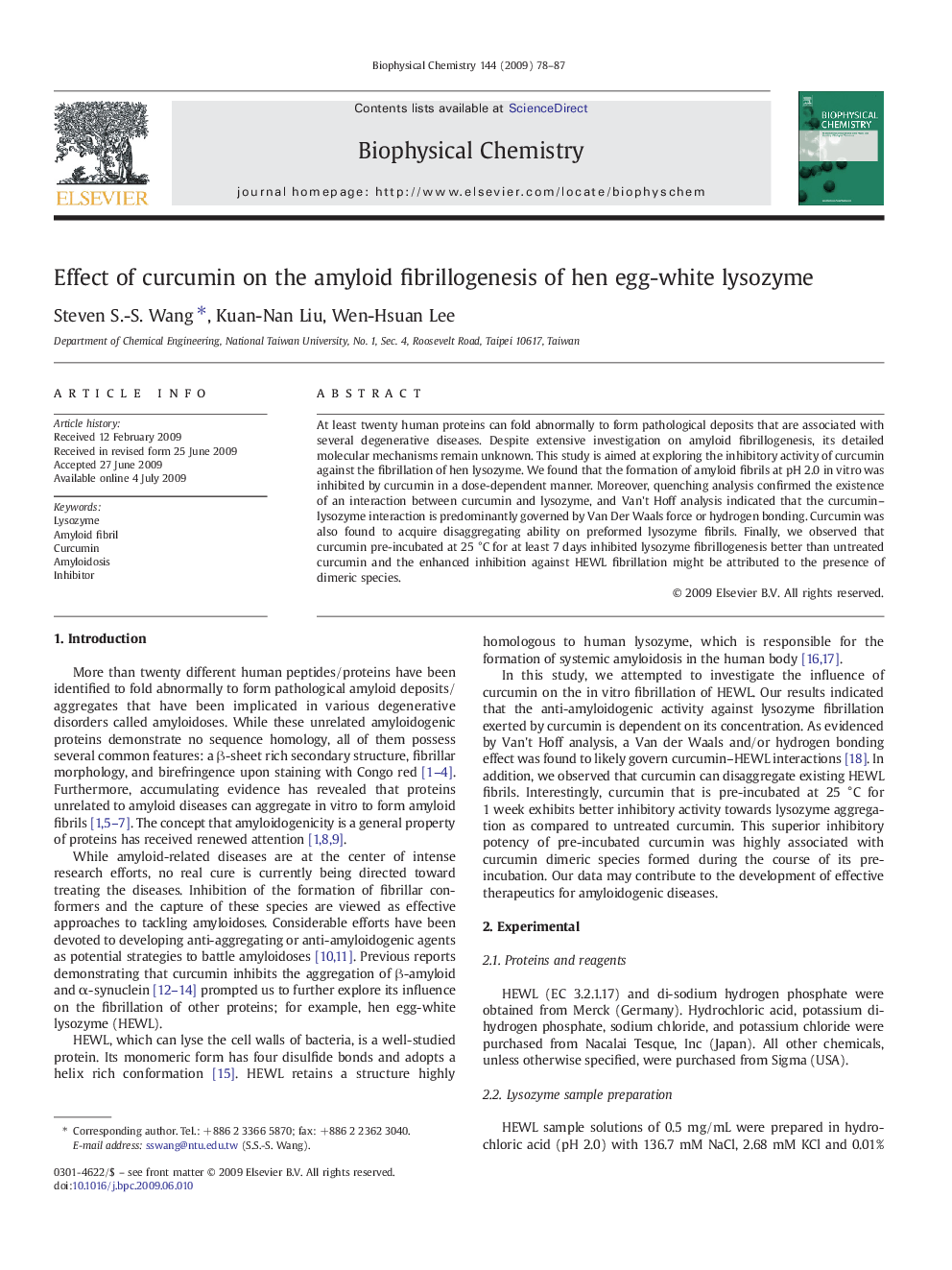| Article ID | Journal | Published Year | Pages | File Type |
|---|---|---|---|---|
| 5371792 | Biophysical Chemistry | 2009 | 10 Pages |
At least twenty human proteins can fold abnormally to form pathological deposits that are associated with several degenerative diseases. Despite extensive investigation on amyloid fibrillogenesis, its detailed molecular mechanisms remain unknown. This study is aimed at exploring the inhibitory activity of curcumin against the fibrillation of hen lysozyme. We found that the formation of amyloid fibrils at pH 2.0 in vitro was inhibited by curcumin in a dose-dependent manner. Moreover, quenching analysis confirmed the existence of an interaction between curcumin and lysozyme, and Van't Hoff analysis indicated that the curcumin-lysozyme interaction is predominantly governed by Van Der Waals force or hydrogen bonding. Curcumin was also found to acquire disaggregating ability on preformed lysozyme fibrils. Finally, we observed that curcumin pre-incubated at 25 °C for at least 7 days inhibited lysozyme fibrillogenesis better than untreated curcumin and the enhanced inhibition against HEWL fibrillation might be attributed to the presence of dimeric species.
